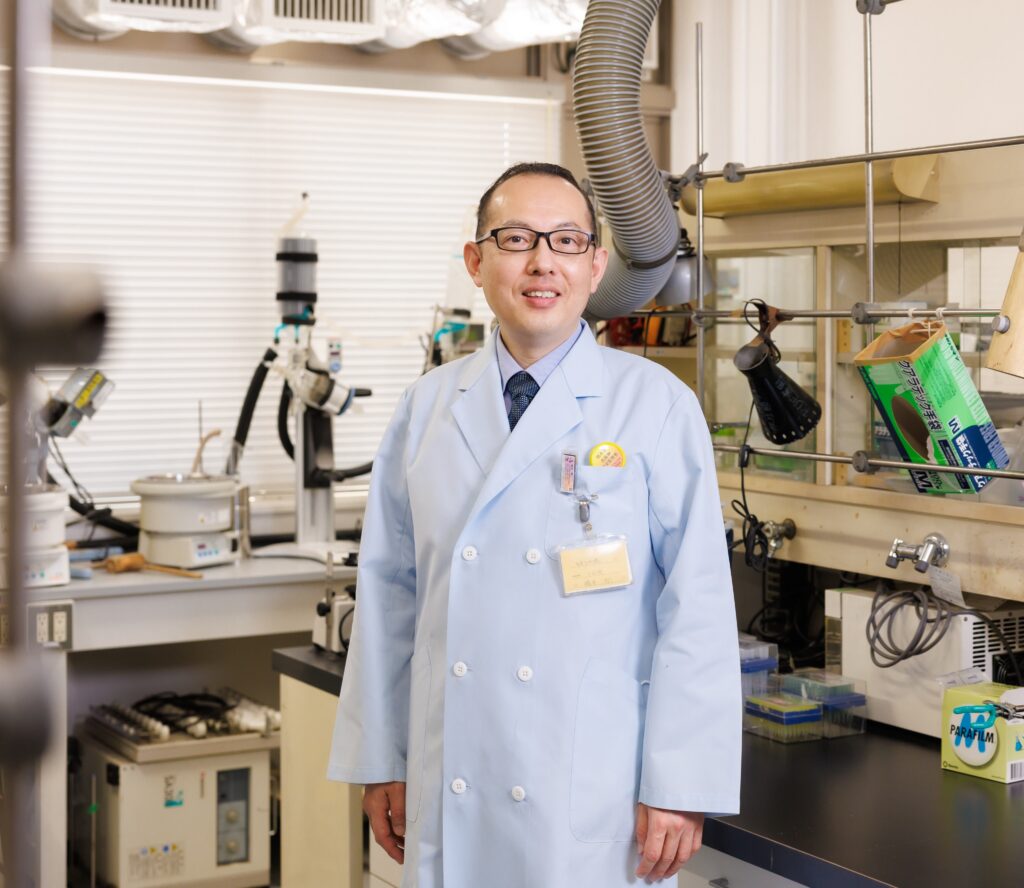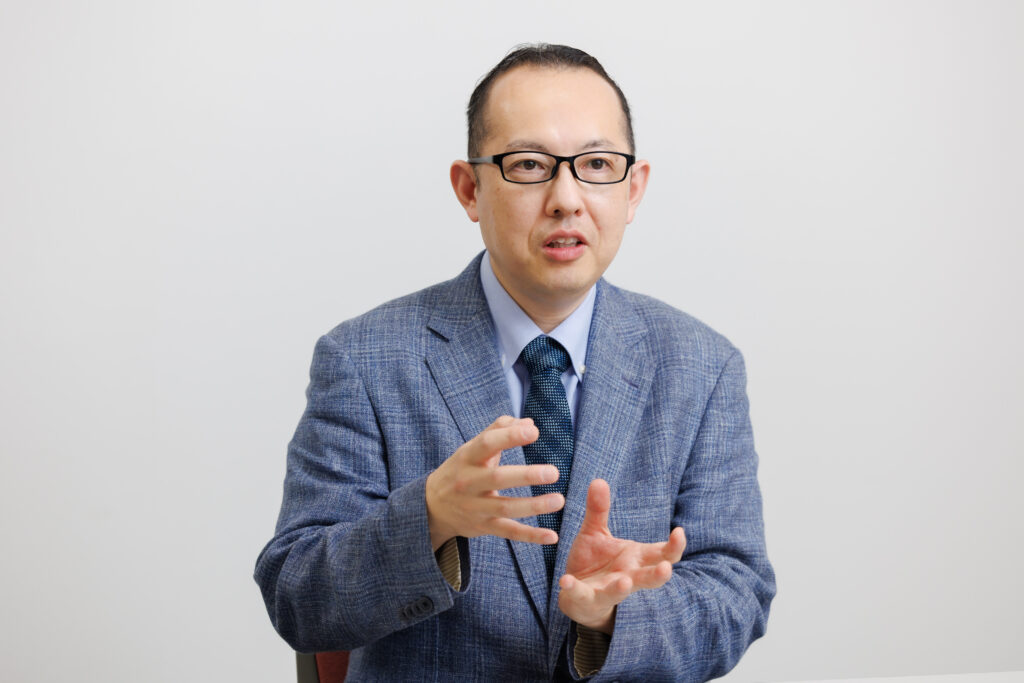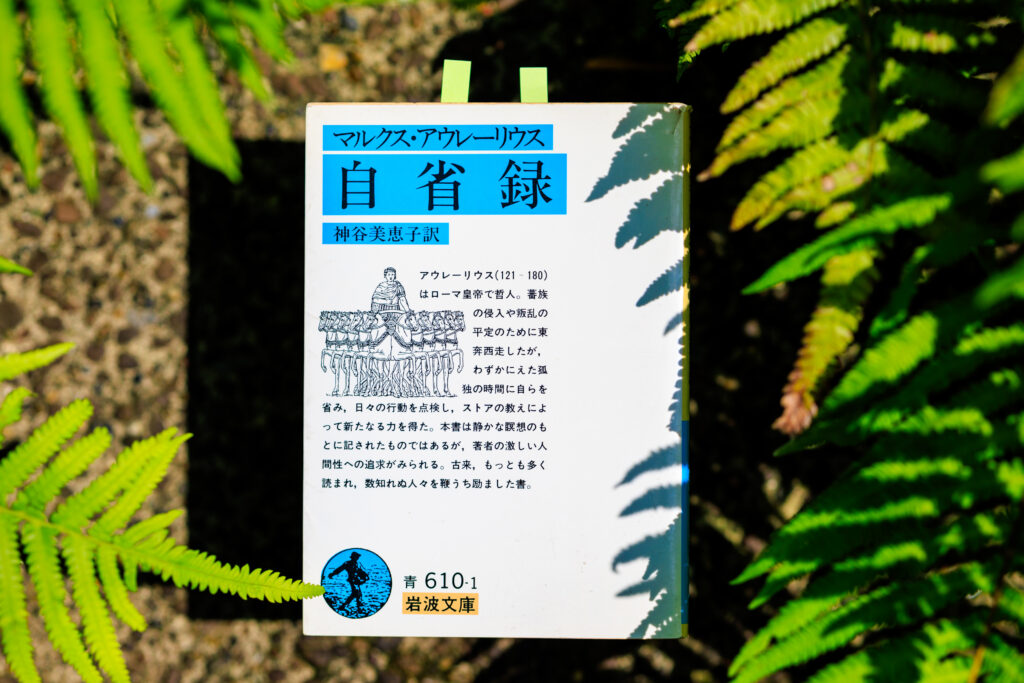
The focus of Faculty of Science and Technology Professor Takeshi Hashimoto is research into creating molecules that identify specific molecules and ions. He considers the significance of creating artificial molecules without using naturally occurring molecules, and the practical applications of this in the future.
Chemistry is an academic filed with a diverse array of aspects. Amidst the range of possible research domains, the area I specialize in is called analytical chemistry. My focus is “molecular recognition”, which involves creating special molecules that react to specific molecules and ions by changing color, lighting up, or emitting electrical signals.
Think back to the litmus paper you used in science experiments as a junior high school student. Properties of an aqueous solution unknowable simply by looking became evident to the eye through the color of the litmus paper. One of the targets of my research is the creation of molecules that make the presence of the target molecule visually discernable in this way, which is to say, molecules that can respond to a specific molecule.
There are of course many natural molecules which can display reactions to specific molecules, but using artificial molecules instead is my area of interest.
The goal is to use artificial molecules that do not impact ecology

While natural molecules have the benefit of coming in a large variety of types and are inexpensive to create, they break up easily under extreme conditions like high or low temperatures, and extracting materials that are their raw ingredients from plants and animals has the danger of threatening ecosystems.
Due to these drawbacks, there are cases where using natural molecules is difficult, and cases in which target molecules cannot be identified by natural molecules. Thankfully, artificial molecules come to the rescue.
The results of this research has the potential to bear fruit in a wide range of areas moving forward. One of these is the purification of ultra-pure water which has applications in water for injection and cleaning medical equipment. The water we use in daily life contains substances called endotoxins that cause fevers when they enter the bloodstream. But harnessing the power of molecules allows us to detect and remove endotoxins to the extreme.
In the even nearer future, if we can create molecules that react to specific bacteria, then during artificial joint surgery we could test on the spot to make sure the affected area is not infected with bacteria. This will lead to decreasing the risk of being infected after surgery.
In the treatment of cows, horses and other large animals that cannot be taken to clinics, there are many cases that rely on the on-site administration of antibiotics. If we can easily determine the presence and type of contagions using reagents that employ new molecules even in locations without special equipment, not only will this prevent the misuse of antibiotics, it will also contribute to suppressing the emergence of resistant bacteria.
The intricate, massive world of molecules
The world of molecules is intricately small, yet grandly massive. For example, the number of molecules contained in one drop of water (approx. 0.03 mL) is about 10 to the power of 21. When taking data in an experiment, it is impossible to examine each single molecule in that unfathomable amount. We look at the overall movement of molecules and the average reactions.
However, when results do not match the hypothesis, the process of verifying the reason requires a micro viewpoint that asks questions like, “Were there molecules that moved differently from others?” and, “Why did that occur?”
Results that seem to us to be coincidental and occurring from the juxtaposition of various conditions are, from the viewpoint of molecules, inevitable results that had to be just as they were. And I believe that as long as there is a reason therein, clarifying it is our role as researchers.
The book I recommend
“Meditations”
by Marcus Aurelius, translated by Mieko Kamiya, Iwami Bunko

The author of this book is a Roman Emperor known as a Stoic philosopher. Though it is a rambling collection including journal entries and memos, you also find words that resonate in your heart every time you reread it. It is surprising to think that these words were written over 1,800 years ago.
-
Takeshi Hashimoto
- Professor
Department of Materials and Life Sciences
Faculty of Science and Technology
- Professor
-
Graduated from the Department of Chemistry in the Faculty of Science and Technology at Sophia University and received his M.S. and Ph.D in Science at the university’s Graduate School of Science and Technology. He served as a Dowa Mining Co., Ltd. researcher, and in 2000 began serving as an assistant and an assistant professor in the Sophia University Faculty of Science and Technology’s Chemistry Department, an assistant professor in the Department of Materials and Life Sciences, and an associate professor in the same department from 2015. He has served in his current position since 2023.
- Department of Materials and Life Sciences
Interviewed: June 2023